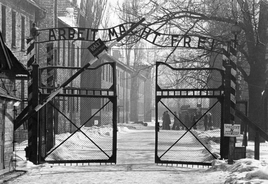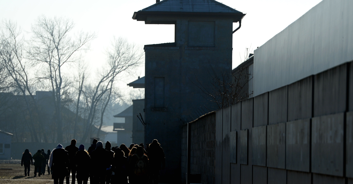In the 70 years that have passed since the end of WWII, the families of those who were caught up in its horrors have done their best to ensure that the tragedies faced by people at the hands of the Nazis are not forgotten. The death camps at Dachau and Auschwitz have been preserved so that current generations can witness firsthand the crimes of those that preceded them, and school classrooms across the globe teach children about the persecution faced by Jewish people and other minorities in the hope that history will never repeat itself.
However, when the Nazis faced an uprising at one death camp in Sobibor, Poland, in 1943, historians say they made an attempt to erase all evidence that the site had ever existed. They knocked down the gas chambers, buried anything incriminating, and built a road over the top of it.
Decades later, archaeologists went in to uncover whatever they could.
The excavation of the site had been going on for years, but - until 2014 - no firm traces of the gas chambers had been found. Because of that, it's always been difficult to estimate exactly how many people succumbed at the site.
"Finally, we have reached our goal — the discovery of the gas chambers. We were amazed at the size of the building and the well-preserved condition of the chamber walls," said Yoram Haimi, one of the archaeologists.
Haimi actually has a personal connection to the site, as two of his uncles who had been living in Paris during the war were taken by the Nazis and executed at Sobibor due to their Jewish heritage. So, for him, the discovery was incredibly important.
"The extermination of people took place there; murder by smoke from an engine that killed everyone within 15 minutes in these gas chambers, in torment, shouting," archaeologist Wojciech Mazurek told Reuters Television. "It is said that ... the Nazis even bred geese in order to drown out these shouts so that prisoners could not have heard these shouts, these torments."
By all accounts the events that took place at Sobibor sound truly horrific, and it's currently estimated that around a quarter of a million Jewish people lost their lives at the camp.
The 1943 uprising was said to be incredibly bloody, too. According to Israel’s Yad Vashem International Institute for Holocaust Research, around 300 people managed to escape during the rebellion, but most of those were later recaptured and killed. Even those who did not break out were punished for the others' actions.
By the end of the war, only 50 or so of those who escaped were still alive.
Obviously, the events that happened at Sobibor were devastating - as were those that occurred at every other work or death camp during WWII - but the excavation, and indeed the commemoration, of the Polish site is an important process for those who were affected by the Nazi occupation of the country during the '30s and '40s.
By obtaining an accurate record of exactly what happened there and reminding the world of the horrors that humankind inflicted on each other all those years ago, we can hopefully ensure that nothing so terrible will ever happen again.


